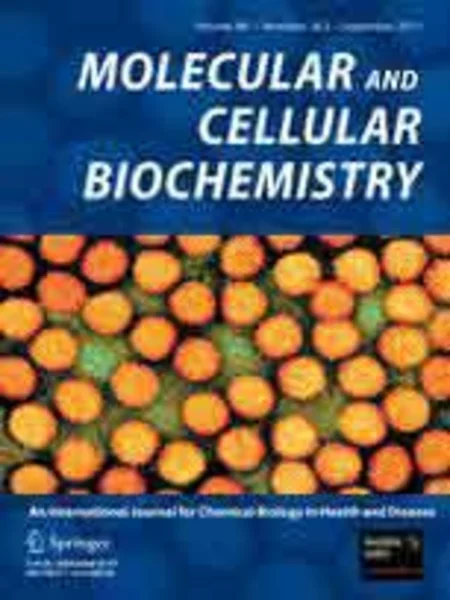-
nutriepigenetic regulation by folate–homocysteine–methionine axis: a review
جزئیات بیشتر مقاله- تاریخ ارائه: 1392/07/24
- تاریخ انتشار در تی پی بین: 1392/07/24
- تعداد بازدید: 1026
- تعداد پرسش و پاسخ ها: 0
- شماره تماس دبیرخانه رویداد: -
although normally folic acid is given during pregnancy, presumably to prevent neural tube defects, the mechanisms of this protection are unknown. more importantly it is unclear whether folic acid has other function during development. it is known that folic acid re-methylates homocysteine (hcy) to methionine by methylene tetrahydrofolate reductase-dependent pathways. folic acid also generates high-energy phosphates, behaves as an antioxidant and improves nitric oxide (no) production by endothelial no synthase. interestingly, during epigenetic modification, methylation of dna/rna generate homocysteine unequivocally. the enhanced overexpression of methyl transferase lead to increased yield of hcy. the accumulation of hcy causes vascular dysfunction, reduces perfusion in the muscles thereby causing musculopathy. another interesting fact is that children with severe hyperhomocysteinaemia (hhcy) have skeletal deformities, and do not live past teenage. hhcy is also associated with the progeria syndrome. epilepsy is primarily caused by inhibition of gamma-amino-butyric-acid (gaba) receptor, an inhibitory neurotransmitter in the neuronal synapse. folate deficiency leads to hhcy which then competes with gaba for binding on the gaba receptors. with so many genetic and clinical manifestations associated with folate deficiency, we propose that folate deficiency induces epigenetic alterations in the genes and thereby results in disease.
مقالات جدیدترین رویدادها
-
استفاده از تحلیل اهمیت-عملکرد در ارائه الگوی مدیریت خلاقیت سازمانی و ارائه راهکار جهت بهبود
-
بررسی تاثیر ارزش وجوه نقد مازاد بر ساختار سرمایه شرکت های پذیرفته شده در بورس اوراق بهادار تهران
-
بررسی تأثیر سطح افشای ریسک بر قرارداد بدهی شرکت های پذیرفته شده در بورس اوراق بهادار تهران
-
بررسی تأثیر رتبه بندی اعتباری مبتنی بر مدل امتیاز بازار نوظهور بر نقد شوندگی سهام با تأکید بر خصوصی سازی شرکت ها
-
تأثیر آمیخته بازاریابی پوشاک ایرانی بر تصویر ذهنی مشتری پوشاک ایرانی (هاکوپیان)
-
critic on typology of ceiling of amir inn and arch in tabriz bazaar & complex shaking resistance evaluation
-
تعیین ارزش زمان سفر با استفاده از روش ترجیحات بیان شده مطالعه موردی: شهر تهران
-
بررسی مؤلفه های تأثیر گذار در تحلیل هویت شهری
-
گزارش یک مورد سندرم آلبرایت
-
مقایسه مفهوم ارتباط درون و بیرون در ایران و جهان از دیدگاه کریستیان نوربرگ شولتز
مقالات جدیدترین ژورنال ها
-
مدیریت و بررسی افسردگی دانش آموزان دختر مقطع متوسطه دوم در دروان کرونا در شهرستان دزفول
-
مدیریت و بررسی خرد سیاسی در اندیشه ی فردوسی در ادب ایران
-
واکاوی و مدیریت توصیفی قلمدان(جاکلیدی)ضریح در موزه آستان قدس رضوی
-
بررسی تاثیر خلاقیت، دانش و انگیزه کارکنان بر پیشنهادات نوآورانه کارکنان ( مورد مطالعه: هتل های 3 و 4 ستاره استان کرمان)
-
بررسی تاثیر کیفیت سیستم های اطلاعاتی بر تصمیم گیری موفق در شرکتهای تولیدی استان اصفهان (مورد مطالعه: مدیران شرکتهای تولیدی استان اصفهان)
-
روانشناسی قانونی: ضرورتی در نظام عدالت کیفری ایران
-
تدوین مدل معادلات ساختاری اهمال کاری بر اساس سرمایه روان شناختی (امید، خوش بینی، تاب آوری و خودکارآمدی) با اثر تعدیل کنندگی تفکر انتقادی
-
بررسی رابطه بین سبکهای مدیریت مدیران با سلامت سازمانی و عملکرد شغلی کارکنان (اداره کل بنادر و دریانوردی استان خوزستان منطقه ویژه بندر امام خمینی)
-
بررسی اصل عدم با اصل استصحاب
-
تاثیر ویژگی مدیریتی ( خودشیفتگی، توانایی مدیر ) بر کنترل حسابرسی داخلی با تاکید بر نقش سیستم های حسابداری مدیریت




سوال خود را در مورد این مقاله مطرح نمایید :